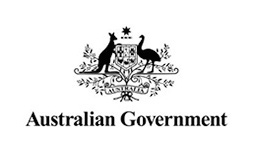Dr Saveez Saffarian – Abrogating ALIX interactions result in stuttering of the ESCRT machinery

Kirby Institute Seminar Series presents
 |
Associate Professor, Department of Physics and Astronomy, Department of Biology, Center for Cell and Genome Sciences, University of Utah, USA |
About your speaker
Dr Saveez Saffarian received his BSc in Physics from Sharif University of Technology in 1998 and a PhD in Physics from Washington University in St Louis in 2002 working with Prof. Elliot Elson. He joined the faculty at Washington University as an instructor from 2002 to 2004. During the course of his research at Washington University in St Louis, he focused on building single molecule imaging and fluorescence correlation spectroscopy instruments and used them to visualize the motion of matrix metalloproteases on collagen fibrils and oligomerization of EGF receptors in live cells. Driven by an interest in cell biology, he joined Tom Kirchhausen's lab at Harvard Medical School as a postdoctoral fellow from 2004 to 2009 where he studies endocytosis of clathirn coated vesicles and enveloped viruses. In 2010 he started his own laboratory at University of Utah focusing on assembly and budding of HIV and replication of negative sense RNA viruses. During the course of the last five years, Dr Saffarian's lab has identified essential mechanisms linking budding and maturation of HIV as well as replication of negative sense RNA viruses. Saffarian lab is now focused on applying high resolution imaging approaches as well as biochemistry to dissect these novel molecular mechanisms.
Abstract
ESCRTs are cellular proteins that catalyze the fission of membranes. ESCRT associated protein, ALIX plays an essential role in budding of HIV, exosome release, down regulation of G-protein coupled receptors, cytokinesis and multi vesicular budding. The consensus view is that ALIX plays a role by binding to late domains/ubiquitin/Cepp55 and helps recruit downstream ESCRT-III proteins which catalyze the fission of the membrane. I will present live imaging data showing recruitment of ESCRTs including ALIX to the sites of HIV assembly. Surprisingly, we find that the consensus linear model of recruitment of ESCRTs does not hold in vivo. Specifically I will show that abrogating the main interaction between Gag and ALIX results in multiple recruitments of ALIX before a delayed release of HIV. In downstream interactions, ALIX and TSG101 recruit CHMP4 and VPS4 proteins which catalyze the fission of the membrane. We further show that abrogating the main interaction between Gag and ALIX results in multiple recruitments of CHMP4 and VPS4 and that during transient recruitment the stoichiometry of all ESCRT components remains the same regardless of the mutations abrogating ALIX and Gag interactions. Our results demonstrate that ALIX's interactions with late domains of HIV are not essential for recruitment, however play a crucial role further downstream during function of the full ESCRT machinery.


